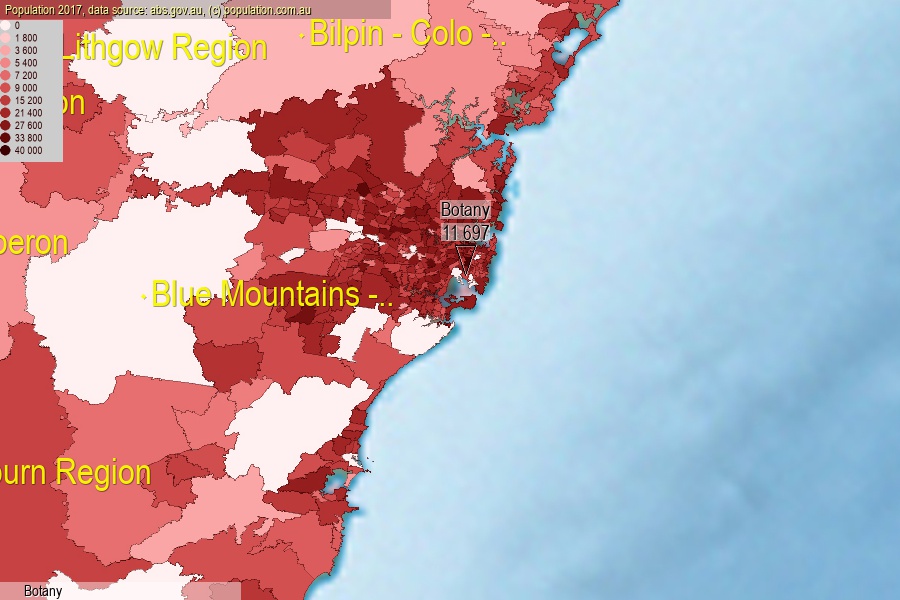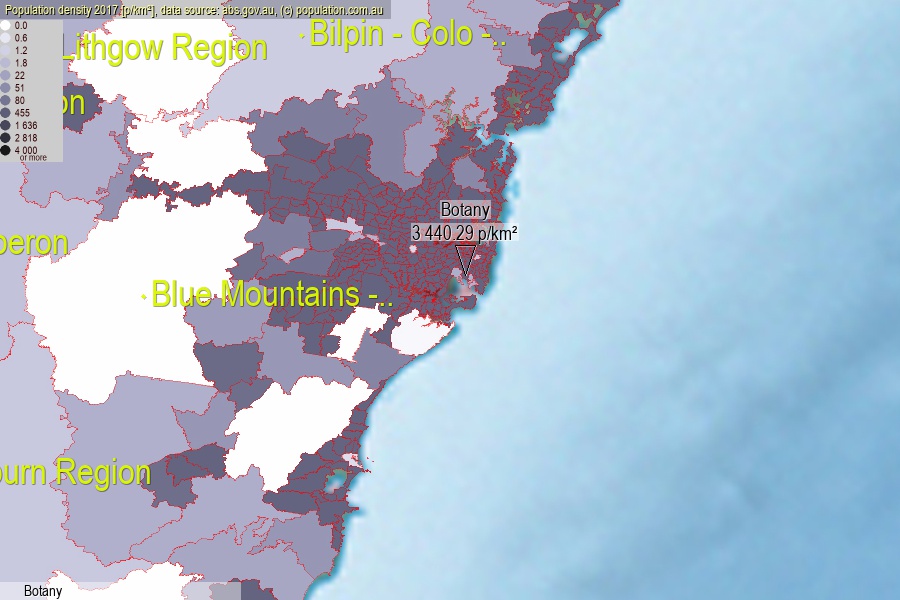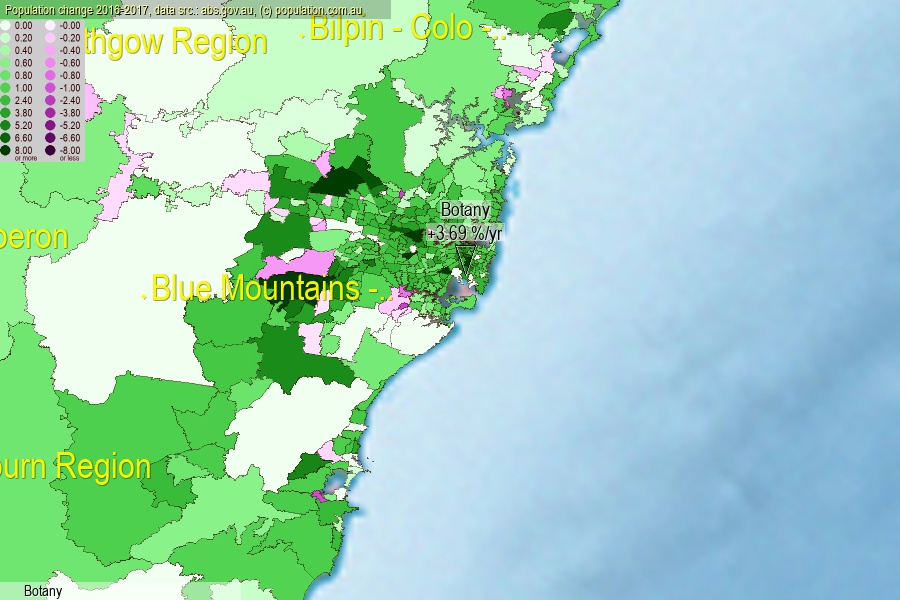 population.com.au
population.com.auLast official estimated population of Botany (as Statistical Area Level 2) was 11 697 people (on 2017-06-30)[2]. This was 0.05% of total Australian population and 0.147% of NSW population. Area of Botany is 3.40 km², in this year population density was 3 440.29 p/km² . If population growth rate would be same as in period 2016-2017 (+3.69%/yr), Botany population in 2025 would be 15 628. [0]



Click to enlarge. Botany is located in the center of the images.
Population [people], population density [p./km²] and population change [%/year] [2]
View borders » (new window) [4]
[1991-1992] -0.75 %/Yr.
[1992-1993] -1.09 %/Yr.
[1993-1994] -0.34 %/Yr.
[1994-1995] -0.24 %/Yr.
[1995-1996] +2.05 %/Yr.
[1996-1997] +10.73 %/Yr.
[1997-1998] +5.71 %/Yr.
[1998-1999] +1.05 %/Yr.
[1999-2000] +1.70 %/Yr.
[2000-2001] +4.01 %/Yr.
[2001-2002] +3.81 %/Yr.
[2002-2003] +0.87 %/Yr.
[2003-2004] +0.09 %/Yr.
[2004-2005] +0.02 %/Yr.
[2005-2006] +0.24 %/Yr.
[2006-2007] +2.30 %/Yr.
[2007-2008] +3.46 %/Yr.
[2008-2009] +3.22 %/Yr.
[2009-2010] +1.57 %/Yr.
[2010-2011] +1.41 %/Yr.
[2011-2012] +2.49 %/Yr.
[2012-2013] +2.68 %/Yr.
[2013-2014] +3.98 %/Yr.
[2014-2015] +4.53 %/Yr.
[2015-2016] +6.17 %/Yr.
[2016-2017] +3.69 %/Yr.
[0] Calculated with linear interpolation from officially estimated population
[1] Read more about SA2 and Australian Statistical Geography Standard (ASGS) on abs.gov.au
[2] Population data from Australian Bureau of Statistics (Population and density: 2017; change: 2016-2017)
[3] Digital Boundaries: Australian Statistical Geography Standard (ASGS) 2016.
[4] Border coordinates are simplifyed using Ramer-Douglas-Peucker algorithm.